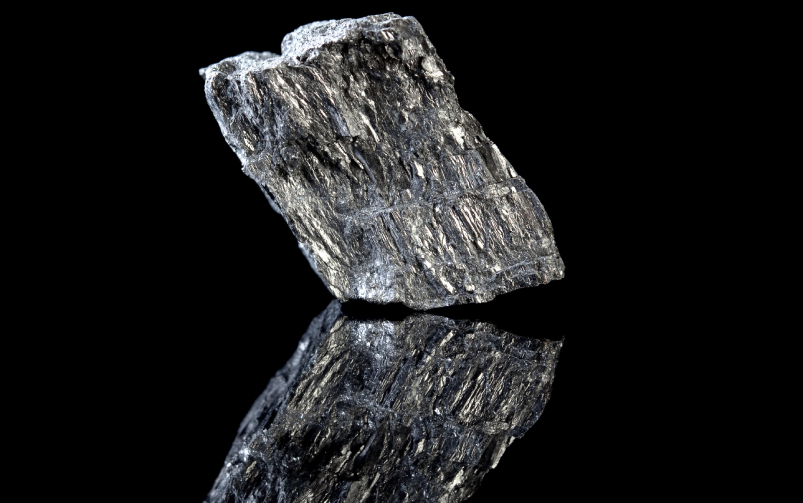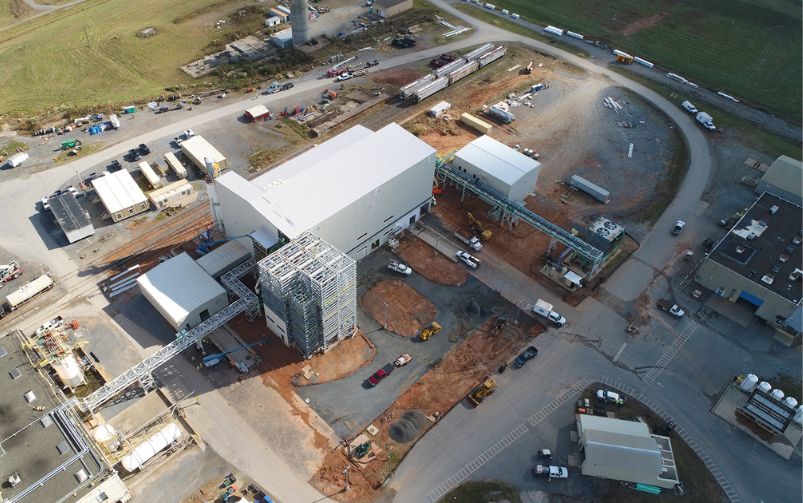The South Flank iron ore mine, owned by BHP, is Australia’s largest new iron ore mine in more than 50 years. Iron ore mines could benefit from a new process that uses microbes to break down tailings. Courtesy of BHP.
Research from the University of Queensland in Australia, in cooperation with the Canadian Light Source (CLS) synchrotron facility, shows that microbes could be used to accelerate the weathering of iron ore tailings and convert them into soil that is healthy enough to grow crops and native plants.
According to research published on Aug. 13 in the scientific journal Environmental Science & Technology, the process involves encouraging specific microbes to colonize tailings that have been amended with organic matter (such as mulch). Then, the microbes decompose the organic materials and dissolve minerals in the tailings to form soil crumbs (namely aggregates)—the building blocks of soil quality.
“Tailings have no functional soil structure. They are massive, compacted, fine-textured byproducts from the mining process,” said Longbin Huang, a professor at the University of Queensland’s Sustainable Minerals Institute and one of the co-authors of the research paper, in an interview with CIM Magazine. “That’s why we want to produce these aggregates, so [they develop] stable structure and porosity [in the tailings].”
The porosity, once it has developed in the tailings, creates space between otherwise compacted tailings particles, which allows roots, water, microbes and gas—like oxygen—to proliferate, just like in arable soil.
In the research, native microbes carried in the organic matter were inoculated in magnetite tailings collected from an iron ore mine in Western Australia. Huang explained that the research focused on iron ore tailings so that the team could acquire fundamental knowledge on the process and limit the variables of the research while they studied it. “Therefore, we can have a robust conclusion and we can extrapolate the process [to other types of tailings],” he added.
For its research, the team used Canada’s only synchrotron—a type of cyclic particle accelerator—at CLS in Saskatoon, because of its soft X-ray spectromicroscopy (SM) beamline. The research paper explained that the SM beamline was used “to investigate organic molecules and mineral phases at organo-mineral interfaces in tailings.” This beamline helped researchers understand carbon, nitrogen, iron, aluminum and silicon abundance and speciation in aggregates, yielding key information about the process of organo-mineral association leading to soil aggregation.
The natural weathering of tailings could take thousands of years, according to Huang. However, results from the trial found that the new process could weather minerals in as little as 12 months. “One to three years, no problem,” said Huang, who noted that the time frame is influenced by climate conditions, as freezing weather makes the microbes slower and less effective.
Compared to other processes for remediating mine waste, the new method is also inexpensive to use and has the potential to convert “colossal volumes” of tailings into healthy soil, according to a Sept. 28 press release from CLS.
So far, the researchers have completed a field trial and an extensive greenhouse trial using the rehabilitated tailings to grow crops and native plants like sorghum and maize. An estimated maximum of 1,000 cubic metres of tailings has been converted into healthy soil.
Huang said the most expensive part of the process is obtaining organic matter, but to reduce costs, it could be sourced through agricultural waste or marginal land—land that would not be profitable for agriculture. He added that mining companies could also hire people in local communities to grow biomass.
“The beauty of this technology, compared to conventional engineering-based technology, is that it has a very low socio-economic threshold,” said Huang. “Local communities can easily participate in the supply chain.”
The team of researchers is hopeful that its solution could reduce costs and prevent risks associated with tailings storage facilities. Currently, there are more than 1,800 tailings storage facilities around the world, according to the release, many of which contain iron ore tailings.
“If they can start to [use this process], then it means they can rehabilitate the tailings much cheaper, earlier and faster,” Huang explained. “They can shorten the risk window of exposing the tailings to natural rainfall.”
The researchers stated that the process could also be applied to restore soils damaged by over-farming, overuse of fertilizers and climate change.
While no commercial applications have been developed at this point, and the researchers do not yet have industrial partners, Huang said the next step is to partner with iron ore mines willing to work with them to scale up trials for the technology.
Huang said that the team would collaborate with mining companies to scale up the process and adopt it into field operations for cost-effective reclamation of tailings. “We can educate and train the local operations team, so they can use it going forward and they can train other people,” he said.




